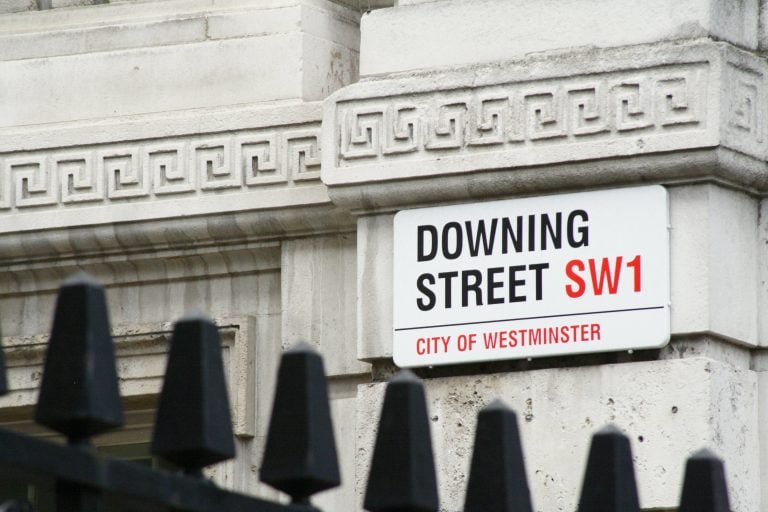BLOG
A right to disconnect? | Finding the formula for work-life balance in 2021
Coronavirus has fundamentally changed the working world as we know it, but the effect on work-life balance is arguably the most significant of all. The physical barriers that once separated work and leisure have been torn down, and this is something with the potential to impact businesses from top to bottom.
As a result, the way that work-life balance is perceived by businesses is being called into question. In fact, one trade union is urging the UK government to factor this into employment law through a new bill – expected to be published this year – that proposes to grant employees the ‘right to disconnect’ from work.
Prospect, a union representing a variety of specialists, has argued that it should be a legal requirement for businesses to negotiate boundaries with staff, ultimately striking a formula that allows them ample time to ‘switch off’.
This comes after its research found that 35% of normally office-based workers said their mental health had degraded since they started working from home during the pandemic – and more than 40% put this down to their inability disconnect from work.
The union’s research director, Andrew Pakes, said: “For millions of us, working from home has felt more like sleeping in the office, with remote technology meaning it is harder to fully switch off.”
From the HR perspective, the concept of healthy work-life balance has long been a priority for businesses. So, with the prospect of a mandate from central government looming, now may be the ideal time for organisations to bake this into their people management agendas.
The dangers
As is the case with all forms of organisational change, the first step is for senior leaders to recognise the dangers associated with the current system. In this case, the obvious starting point is mental health – something that scarcely goes unacknowledged in any conversation on work-life balance.
In its plea to the UK government, Prospect refers to a lack of work-life balance as “the dark side of remote working”, and the reasons for this are clear. The WHO has recently dubbed mental health as “the health epidemic of the 21st century”, and what’s more, a wide body of evidence now links poor work-life balance to poor mental health.
For instance, a survey conducted by The Mental Health Foundation discovered that a third of employees are unhappy about how much time they devote to work, and that over 40% are neglecting other aspects of their life as a result.
It also found that when working long hours, 27% feel depressed and 34% feel anxious.
These figures are clearly concerning in and of themselves, but they are also rather damning from the business perspective, bearing stark implications for the engagement and productivity of employees.
Once again, this is a link that has long been established in the corporate world. One study by Deloitte, for instance, reports that poor mental health among employees costs UK businesses up to £45 billion in lost productivity each year.
In a fraught economic climate where many businesses are attempting to stage a pandemic recovery, this is something that could pose a significant setback.
Related Content
Do you need support?
Speak to us for an honest, no obligation chat on:
0345 226 8393 Lines are open 9am – 5pm
The employer's role
As with many fundamental changes to people strategy, the journey for employers here starts with bolstering communications efforts.
More specifically, the onus is on organisations to create a set of standards for work-life balance, and ensure that managers communicate this to employees on a regular basis, in addition to monitoring progress.
This can be as simple as ensuring employees do not work beyond their agreed hours, that they utilise their annual leave allowance, and that they are comfortable with their workload.
This will not only improve employee satisfaction and performance, but also bolster the organisation’s employer brand.
Workload plays a key role here, and it should also be required of managers to ensure that a suitable balance is struck. Often, employees will be quietly reluctant to take holidays, or feel compelled to work beyond their contracted hours, for fear that it will set them back and their performance will be negatively scrutinised as a result. This can quickly lead to burnout and can be easily mitigated by taking a more diplomatic approach to output expectations.
In many cases, reaffirming that it’s okay to take a break, taking excess work off people’s plates and working with them to prioritise tasks can actually boost productivity, as sometimes having too much on can be lead to nothing being done at all. It will also enable employees to leave work at work, recharge and come back refreshed, rather than working themselves into the ground.
What’s more, before rejecting annual leave requests, managers should carefully weigh up whether this is worth the potential impact on the employee. It might not always be possible to accommodate a request, particularly during busier periods, but this is sometimes all the more reason to ensure employees take the time out they need to decompress.
Keep an eye on those who have a build-up of unused holidays and encourage them to take them; even if the current circumstances mean they have nothing particular planned, this can do wonders for overall wellbeing.
Finally, aside from communicating the company’s stance on work-life balance, managers should also be urged to comply with the standard themselves and resist the temptation to contact employees during evenings, weekends and holidays.
Often, managers will continue to delegate tasks and send resources to employees when they are out of office, with the expectation that they will acknowledge it when they return. But the digital age we live in renders this a flawed approach. With employees able to access platforms such as email, Slack and Microsoft Teams from their smart devices, these communications can act as a source of stress, and ultimately have a negative effect on work-life balance.
If these provisions are firmly in place, and that is made clear to the employee, it is far more likely that they will feel comfortable switching off outside of working hours and during holidays.

Final thoughts
Whilst this is an approach to people management that can be conceived and implemented over a period of months and years, the impetus to do this now is clear.
With bodies such as Prospect vigorously lobbying for change at a governmental level, it would be prudent for employers to assume that a statutory mandate on work-life balance could become a reality in the near future. Indeed, the right to disconnect from work, or ‘le droit à la déconnexion’, has been law in France since 2017 and other countries such as Canada are now considering following suit.
Closer to home, in April 2021, Ireland’s Workplace Relations Committee published an official code of practice giving employees the right to disconnect. At the same time, it also opened a public consultation on the right to request remote working, inviting views from all on how his right can be enshrined in law.
It therefore makes sense to avoid future complications and get ahead of the curve by ingraining this into your culture now.
After all, choosing to implement a policy of your own volition rather than because it is a legal requirement will be viewed as a much more authentic display of your commitment to employee wellbeing – boosting your employer brand, strengthening your talent function and producing greater job satisfaction among employees, all of which can only be good for business.
Advice on all your HR issues
Employers and HR teams will have much to contend as the working world evolves post-lockdown. From helping you to craft a new policy to supporting you through the legalities of implementing hybrid working, our Employment Law and HR experts can help your organisation adapt its people management practices and guide you through any employee obstacles you may encounter quickly and compliantly.
For more information on our fixed-fee support, call 0345 336 8393 or request your free consultation using the button below.
Sign up for the latest news & insights
Resources
Latest News & Insights

Changes to day one unfair dismissal rights | New six-month protection explained
BLOG Written by Patrick Carroll-Fogg on 1 December 2025 Of the almost 75 individual tweaks and changes set to be introduced under the Employment Rights

Breaking down the Budget 2025 for employers
BLOG Written by Daniel Rawcliffe on 27 November 2025 The recently announced UK Budget 2025 is a challenging one for small businesses. While it covers

AI for interviews with job candidates | Balancing technology with a human touch
BLOG Written by Danielle Fargnoli-Read and Tracey Burke on 21 November 2025 AI is reshaping the way UK businesses approach hiring, offering benefits such as

Workplace risks revealed | HSE 2024/25 report shows rising injuries and ill health
BLOG Written on 21 November 2025 Providing a safe, healthy workplace should be a top priority for all employers. But how well are workplaces actually

CQC under scrutiny | Inspection gaps highlight need for compliance readiness
BLOG Written on 12 November 2025 A recent BBC article highlighted that the Care Quality Commission (CQC) failed to routinely inspect a service previously rated

Duty to prevent sexual harassment | Almost half of UK businesses aren’t compliant
BLOG Written on 11 November 2025 Almost a year since the Worker Protection Act 2024 came into force, new research from our team at WorkNest

Unconscious bias in the workplace | Lessons from The Celebrity Traitors
Blog Written by Andrew Moore on 7 November 2025 The Celebrity Traitors has had us all hooked. While we tune in for the twists, betrayals

Best interview techniques for employers | 5 simple strategies for success
BLOG Written by Danielle Fargnoli-Read on 22 October 2025 The interview process hasn’t changed much in decades – and candidates can tell. Recycled questions, rigid

What happens if an employee resigns during the disciplinary process?
Bridging the growing gap between employers and today’s job seekers.



